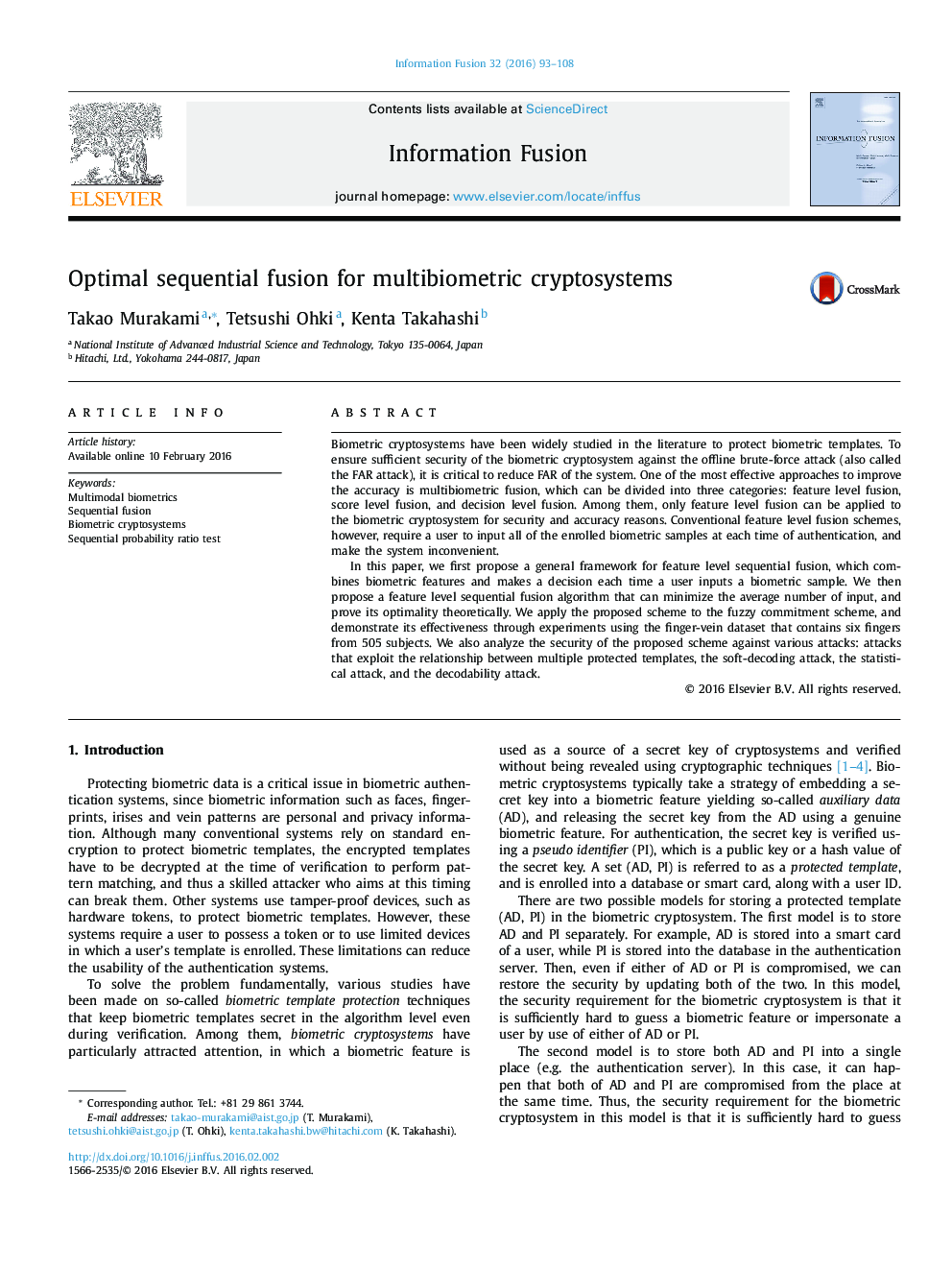| Article ID | Journal | Published Year | Pages | File Type |
|---|---|---|---|---|
| 528180 | Information Fusion | 2016 | 16 Pages |
•We propose a general framework for feature level sequential fusion.•We propose an optimal algorithm for feature level sequential fusion.•The proposed algorithm does not output scores but appropriately sets a threshold.•We prove that the proposed algorithm is optimal by showing its equivalence to SPRT.•We show the effectiveness of the proposed algorithm through experiments.
Biometric cryptosystems have been widely studied in the literature to protect biometric templates. To ensure sufficient security of the biometric cryptosystem against the offline brute-force attack (also called the FAR attack), it is critical to reduce FAR of the system. One of the most effective approaches to improve the accuracy is multibiometric fusion, which can be divided into three categories: feature level fusion, score level fusion, and decision level fusion. Among them, only feature level fusion can be applied to the biometric cryptosystem for security and accuracy reasons. Conventional feature level fusion schemes, however, require a user to input all of the enrolled biometric samples at each time of authentication, and make the system inconvenient.In this paper, we first propose a general framework for feature level sequential fusion, which combines biometric features and makes a decision each time a user inputs a biometric sample. We then propose a feature level sequential fusion algorithm that can minimize the average number of input, and prove its optimality theoretically. We apply the proposed scheme to the fuzzy commitment scheme, and demonstrate its effectiveness through experiments using the finger-vein dataset that contains six fingers from 505 subjects. We also analyze the security of the proposed scheme against various attacks: attacks that exploit the relationship between multiple protected templates, the soft-decoding attack, the statistical attack, and the decodability attack.
